Solutions
Teams
Built for your whole team.
Industries
Trusted by all verticals.
Mediums
Measure any type of ad spend
Platform
Use Cases
Many Possibilities. One Platform.
AI and Automation
The Always-on Incrementality Platform
Teams
Built for your whole team.
Industries
Trusted by all verticals.
Mediums
Measure any type of ad spend
Use Cases
Many Possibilities. One Platform.
AI and Automation
The Always-on Incrementality Platform
How to get your app noticed
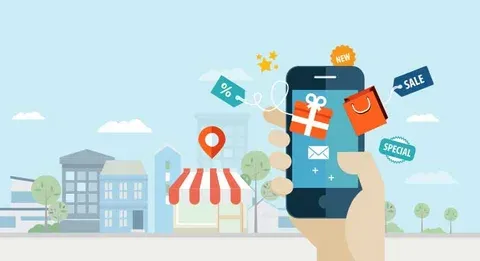
There are almost three million mobile apps available in the app stores. (Source: BusinessOfApps)
In average, people have about 80 apps installed on their mobile devices (Source: Buildfire).
People use an average of 9 apps on a daily basis, and 30 on a monthly basis. (Source: Statista)
Over 60% of users download 0 new apps per month. Yes, ZERO. (source: ComScore)
Marketers spend a lot of time and budgets until they find incremental lift.
The App Store marketplace is one of the most aggressively competitive marketing arena in the world. Companies from all over the world are fighting over users' attention, time, acquiring users and engaging with customers, with a hope that positive return over investment can be reached over time. Incrementality testing has become an item in high need for any marketer.
Most marketers should know the four P’s of marketing:
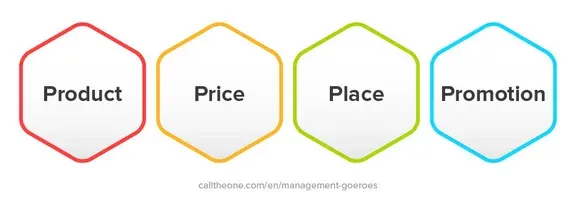
A marketers’ role is to create a marketing strategy to meet the company’s goals.
Marketing an app is no different than marketing any other product in that regard,
Marketers must know their product, research competition, understand their product’s advantages & disadvantages.
Testing user retention and optimizing the product to reach above market average KPIs is critical to the success of any app.
The average user retention rate, 30 days from 1st time open, are between 4-14%, depending on the app vertical. (Source: Adjust)
Product pricing is also an important factor, as price is one a conceptual component of a virtual product, or a product sold through a virtual store.
The competitive landscape of the mobile app world makes promotion an important part of a marketing strategy.
Marketing an app in today’s world requires advertisers to have the appropriate tools and services to get a view over their activities.
Platforms like Tableau, Sisense, Google Data Studio, help marketers create a marketing dashboard revealing all critical marketing data.
Platforms like Algolift provide customers with the means to calculate projected LTV per user.
Customers need a platform that is elastic enough to store and process the data. Many developers use Google Cloud computing, aggregating using Big Query to store the data. Others use Amazon services such as S3.
Dedicated platforms such as Appsumer, Funnel.io offer ad spend aggregation, while this service is also offered by some attribution providers (Appsflyer, Adjust.io, Singular)
Most professional developers also need to integrate an mobile attribution platform to handle the matching between click > install, but more importantly - handle the integrations to ad networks.
With the deprecation of IDFA and attribution being offered by the operating systems (SKAdnetwork, Firebase) more and more developers use the attribution provider as a data aggregator rather than for the attribution functionalities.
Advertisers may (and should) use a real time fraud prevention technology. We reviewed the top five anti-fraud platforms here.
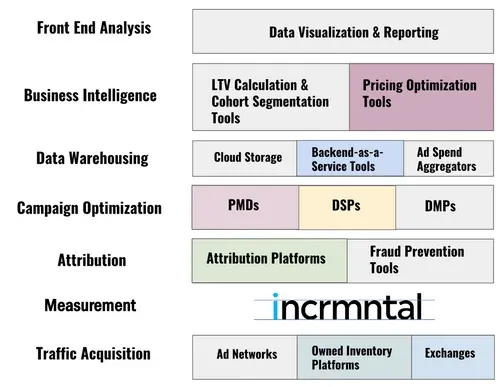
There are literally thousands of media providers around the world, and this list multiplies when adding the various mediums developers can consider as traffic sources where their respective audiences can be found. It takes a while to test all verticals and reach the best media mix.
Platforms like Facebook, Google, Remerge, offer advertisers with incremental testing as part of their service offering. But these tests are limited to the traffic of the platforms themselves.
Most developers start their first campaigns with Facebook -
Setting up campaigns with facebook takes minutes, and facebook has such broad reach and 1st party data that it is almost impossible to find a better source of inventory to start with.
At low scale, Facebook’s own optimization algorithms can find inventory and reach a very competitive cost per install and high retention rates.
Facebook is the best platform for marketers to soft launch and get their product in shape towards marketing at scale.
And when this is achieved, most marketers will scale up their budget with Facebook until a point where the marginal costs become not economically viable to scale further with Facebook.
Most marketers at this stage, will add Google as a marketing source.
Google, like Facebook, has enormous reach, great targeting capabilities given its 1st party data.
There’s a reason why Facebook + Google account for approximately 60% of marketing budgets globally based on eMarketer.
Beyond these two mega-vendors, it’s almost “open game”. There are hundreds, if not thousands, of potential media vendors - each with a unique offering and audience.
Testing new sources of traffic becomes a requirement for growth, but attribution data can provide wrong conclusions about which channels contribute and which do not
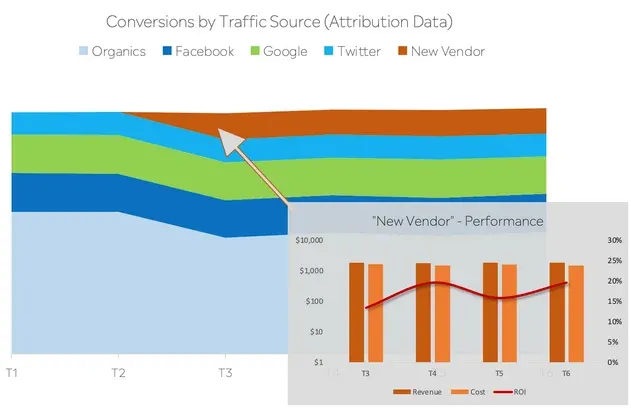
Cannibalization and non incremental sources are easily missed.
Which is why we developed INCRMNTAL - the first and only true incrementality testing platform.
INCRMNTAL is an incrementality measurement platform providing Advertisers with , incrementality and cannibalization scores over their campaigns, ad networks and any marketing activity to unlock the full value of their marketing budget.
If you want to learn more, visit INCRMNTAL or book a demo today!
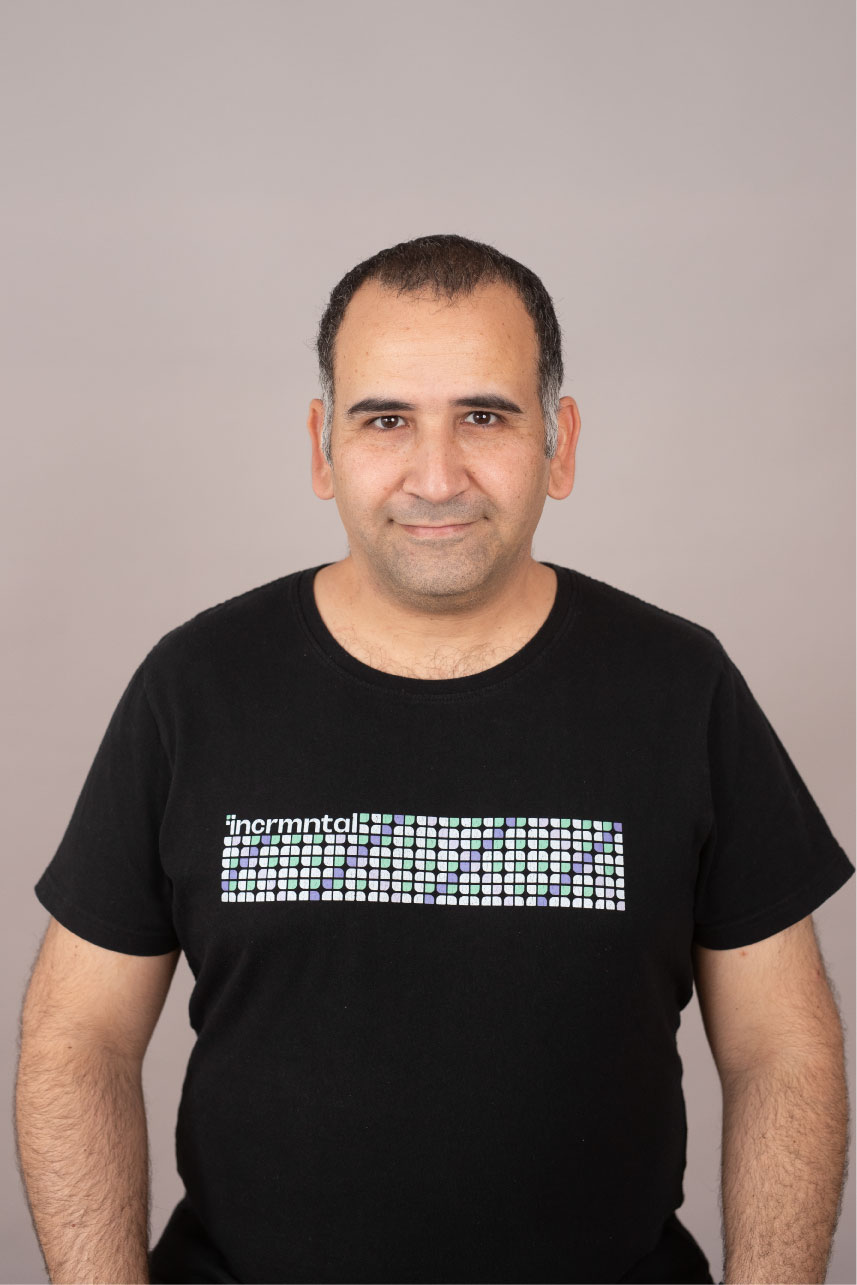
Maor is the CEO & Co-Founder at INCRMNTAL. With over 20 years of experience in the adtech and marketing technology space, Maor is well known as a thought leader in the areas of marketing measurement. Previously acting as Managing Director International at inneractive (acquired by Fyber), and as CEO at Applift (acquired by MGI/Verve Group)